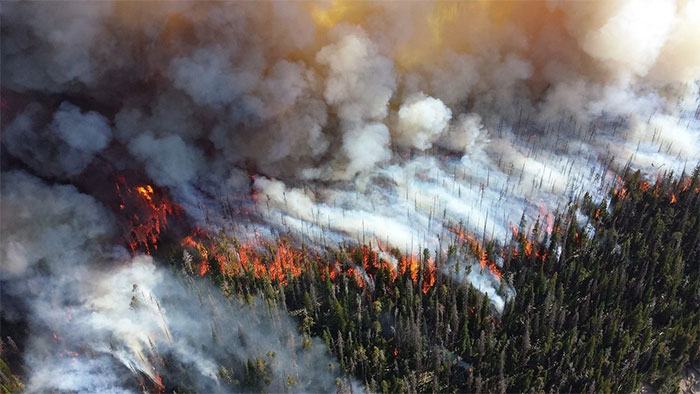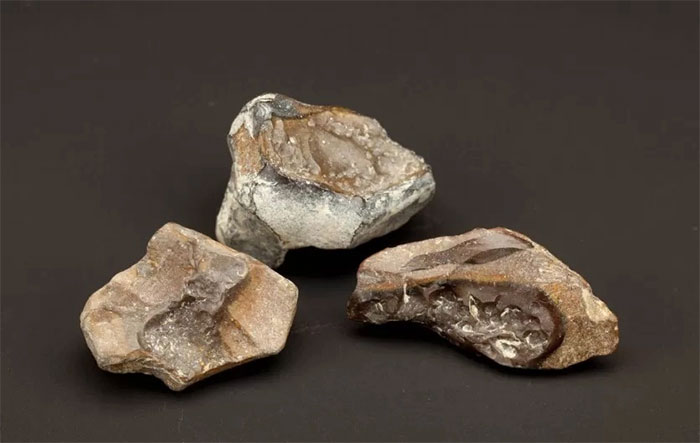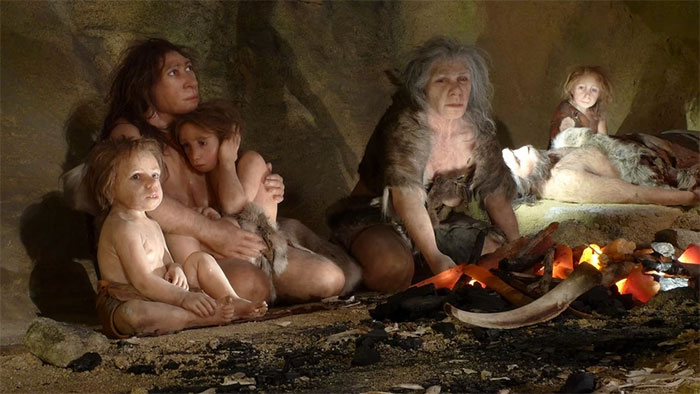When humans harnessed the power of fire, they gradually ascended the food chain. Now, when did this historic event occur?
The ability to use fire has permanently changed the fate of humanity as well as our place in the food chain. In prehistoric times, fire allowed us to cook, transforming humans into a species that efficiently utilizes energy from food. No longer relying solely on foraging, we could absorb a significant amount of caloric energy from cooked meat. Fire also enabled our ancestors to create more effective tools and weapons.
Despite its importance, we still do not know exactly when humans discovered fire or the process of transforming this wild power into a daily tool.
However, according to archaeologist John Gowlett from the University of Liverpool, we can assert that our ancestors became aware of fire around 2 million years ago. This was the prosperous era of Homo erectus – the Upright Man, the first ancient primate to possess the balanced characteristics of modern humans.

Illustration of the time when humans first discovered fire – (Image: Johannes Roots/ArtStation).
“Initially, our ancestors were scavengers around the fire, meaning they recognized the benefits of fire. When they encountered fire during their travels, they would observe or trace the path of the flames,” Mr. Gowlett noted. After encountering naturally occurring fire, these wild individuals may have waited for the flames to die down before checking what the Natural Chef had cooked for them.
In a scientific report published in 2016 in the Royal Society Journal of Biological Sciences, Professor Gowlett stated that the process of discovering fire did not happen overnight. “There is no doubt that the first humans became aware of the existence of fire very early on, similar to modern-day savanna primates. But it was not a discovery event; the discovery of fire can be considered a long-term process.”
Following the process of foraging after a fire, prehistoric humans likely found ways to prolong the flames that were already burning. This means these humanoid creatures not only knew about fire; they were beginning to learn how to use it beneficially; perhaps they used branches and sticks to create fire. According to Mr. Gowlett, prehistoric people may have even used animal dung to sustain the flames.

Natural forest fires may have helped our ancestors discover fire – (Image: Internet).
Moreover, prehistoric humans could also utilize the heat radiating from tree roots after forest fires, using them as a natural baking system. However, researchers admit they are unsure when this process occurred, especially since there is no archaeological evidence showing the existence of these “natural ovens” hidden underground.
Primitive Heating Systems
Fire leaves many traces, and archaeological evidence shows that ancient people knew how to create fire (and perhaps cook more) around 800,000 years ago; some archaeologists believe that hearths may have appeared even earlier, around 1.5 million years ago. Although there is no exact timeline, we can affirm that this was when prehistoric humans began the habit of gathering around cozy hearths.

790,000-year-old stones found in Israel in 2004, showing traces of fire – (Image: Smithsonian).
As cooking increased, the intestines (including structure and microorganisms) as well as the teeth of our ancestors changed. This is the view of anthropologist Richard Wrangham from Harvard University. He argues that once humans lived outside the African savanna rather than under dense forest canopies, they learned to cook the fresh foods around them. Root vegetables and hunted animal meat became easier to swallow and digest under the heat of the fire.
According to Mr. Gowlett, modern humans cannot rely on raw foods because we have evolved after learning how to cook with fire.
Not Only Our Ancestors Knew How to Use Fire
Filipe Natalio, an archaeologist at the Weizmann Institute of Science in Israel, asserts that Neanderthals also knew how to use fire for cooking and tool-making. While we were kindling fires in Africa, Neanderthals were using fire to explore Europe. When our ancestors and Neanderthals met in the Levant (now the region comprising parts of Israel, Lebanon, Syria, and western Jordan), they coexisted and kindled their own fires.

Illustration of Neanderthals displayed at the Neanderthal Museum in Croatia – (Image: Nikola Solic/Reuters).
During this period, prehistoric humans also learned to use fire for tool-making. Around 400,000 years ago, both our ancestors and Neanderthals used fire to create sharp blades. They learned to control the temperature of the flames so that the tools wouldn’t explode under the heat. “When leaving Africa for the Levant, humans hunted smaller animals, which would require smaller blades to extract all the meat,” archaeologist Natalio noted.
Archaeological technology progresses, allowing us to “travel” deeper into the past. According to both experts Gowlett and Natalio, archaeologists continue to find additional remains showing that fire appeared very early in prehistoric societies. Modern chimpanzees also understand the existence of fire, so it is not surprising that our ancestors did too, and knew how to control this ancient energy-producing tool.


















































